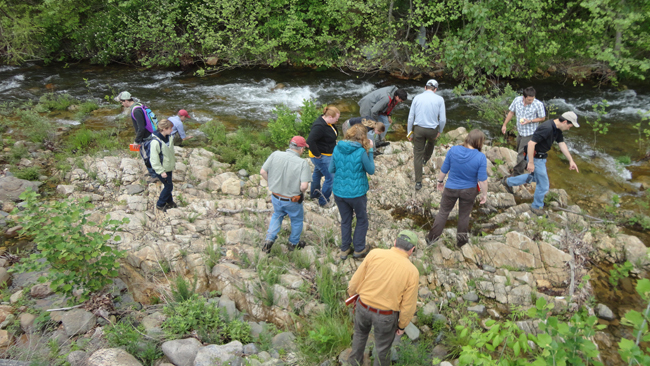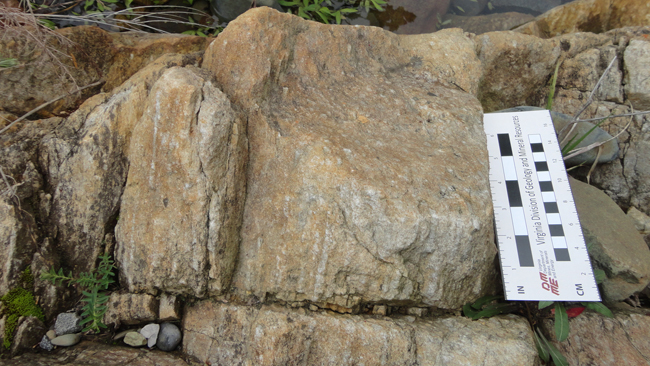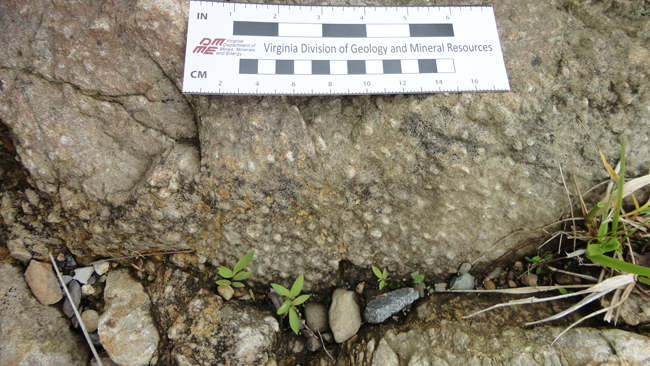As I mentioned, Monday had me out in the field, looking at the western Blue Ridge and eastern Valley & Ridge provinces in Virginia. This was a field review for the new geologic map of the Elkton East quadrangle by Chelsea Jenkins, Chuck Bailey, Mary Cox, and Grace Dawson.
Immediately after lunch, we visited an outcrop in the middle of Naked Creek. You’ll be happy to hear that we all retained our full complement of clothing there. But the rocks were hardly brazen and revealing, either. At first glance, it looked like relatively massive quartzite.
This is the same outcrop where we saw one of the three snakes that the field trip brought us into contact with. The geologists spread out and got up close and personal with the quartz sandstone there…

…We found that if you looked closely, there were some subtle clues that made the outcrop make sense…

Those are Skolithos: trace fossils oriented perpendicular to bedding. They are very common in the Cambrian-aged Antietam Formation, a quartz sandstone that has seen some noticeable deformation.

Since Skolithos are perpendicular to bedding, that allowed us to deduce the orientation of the primary sedimentary layering, and compare it to a widely-distributed cleavage which dipped to the southeast. Overall, the outcrop looked roughly like this in map view:

Just one outcrop among hundreds that went into the map…

0 thoughts on “Veiled geology at Naked Creek”